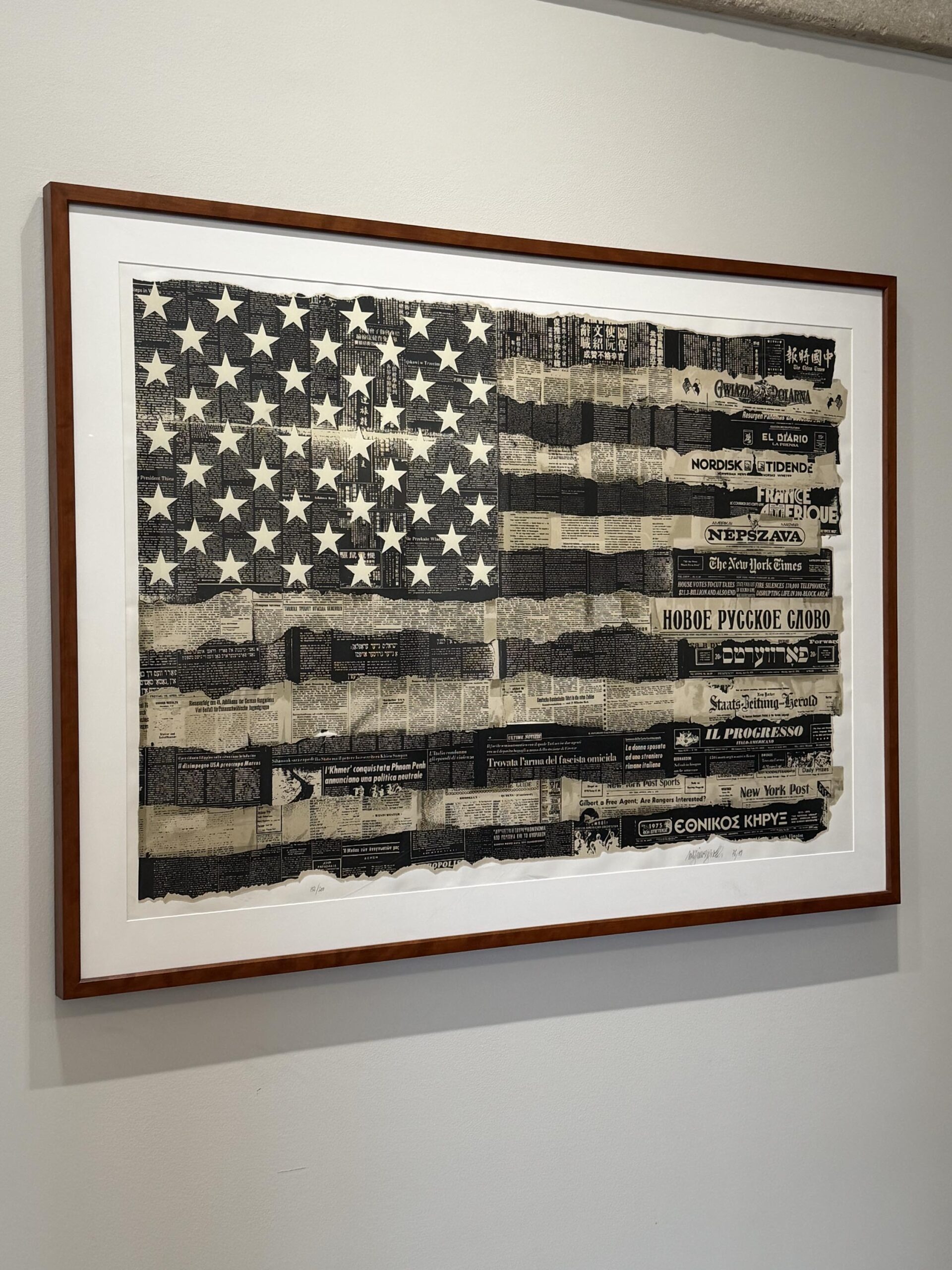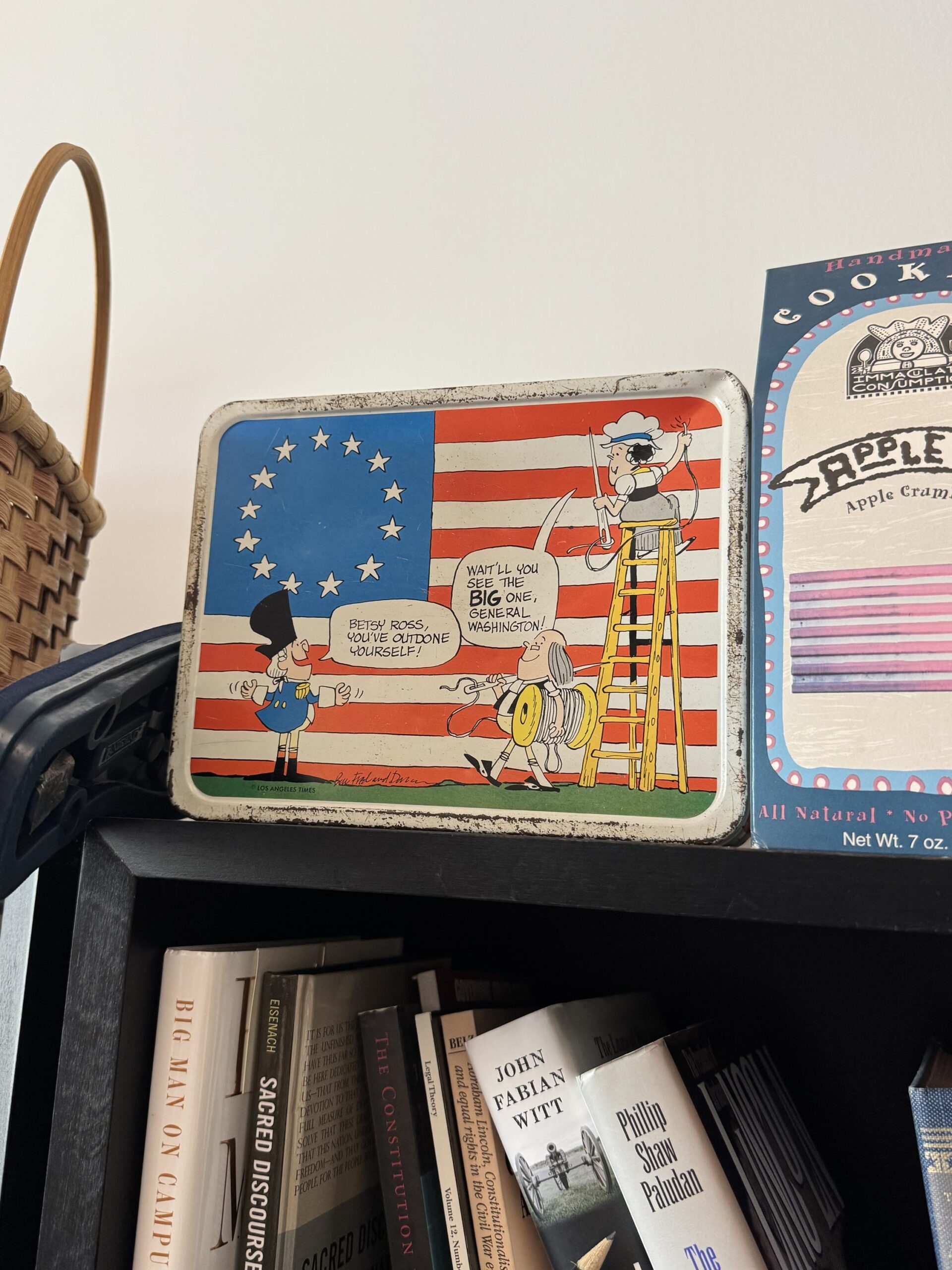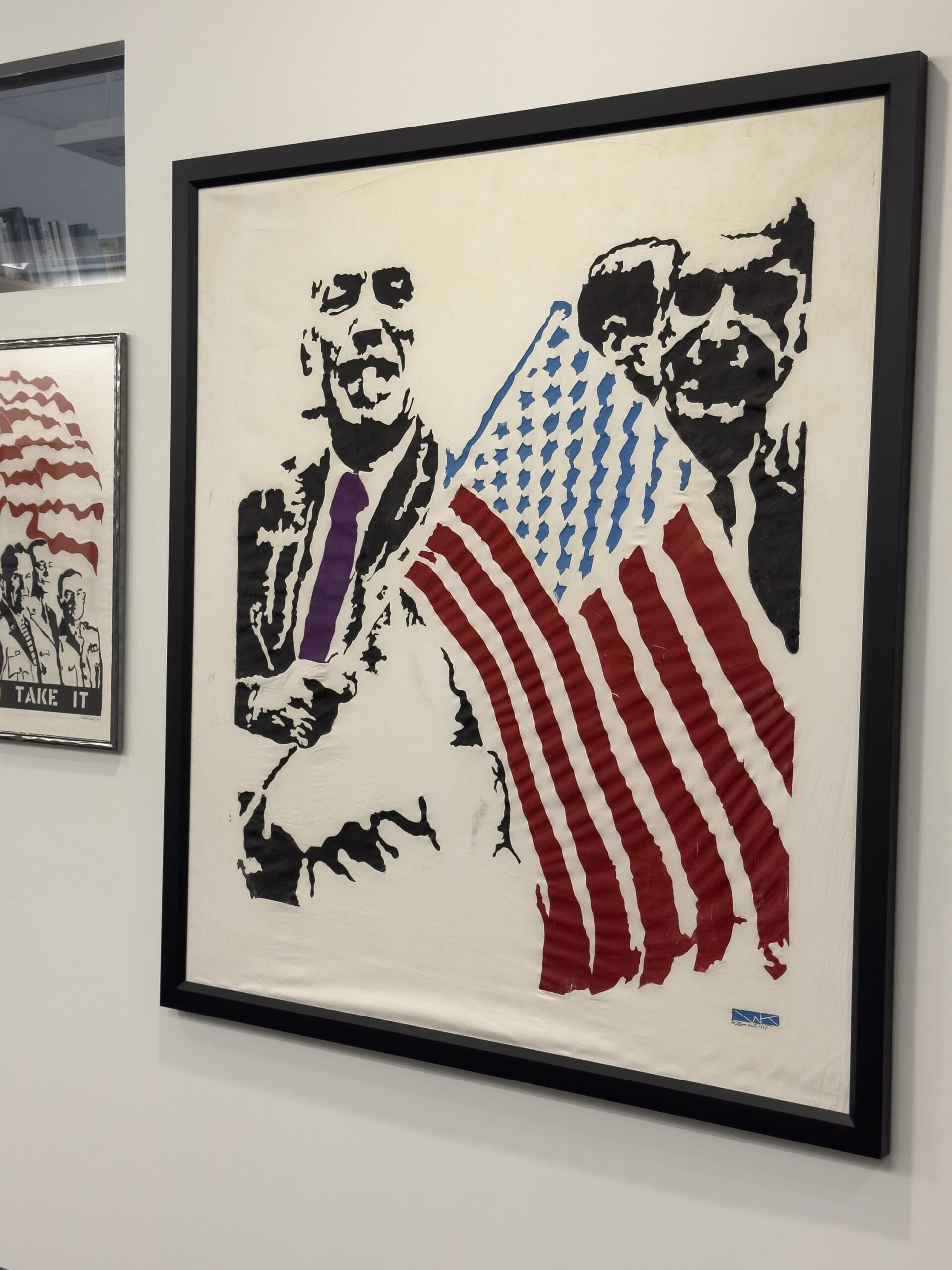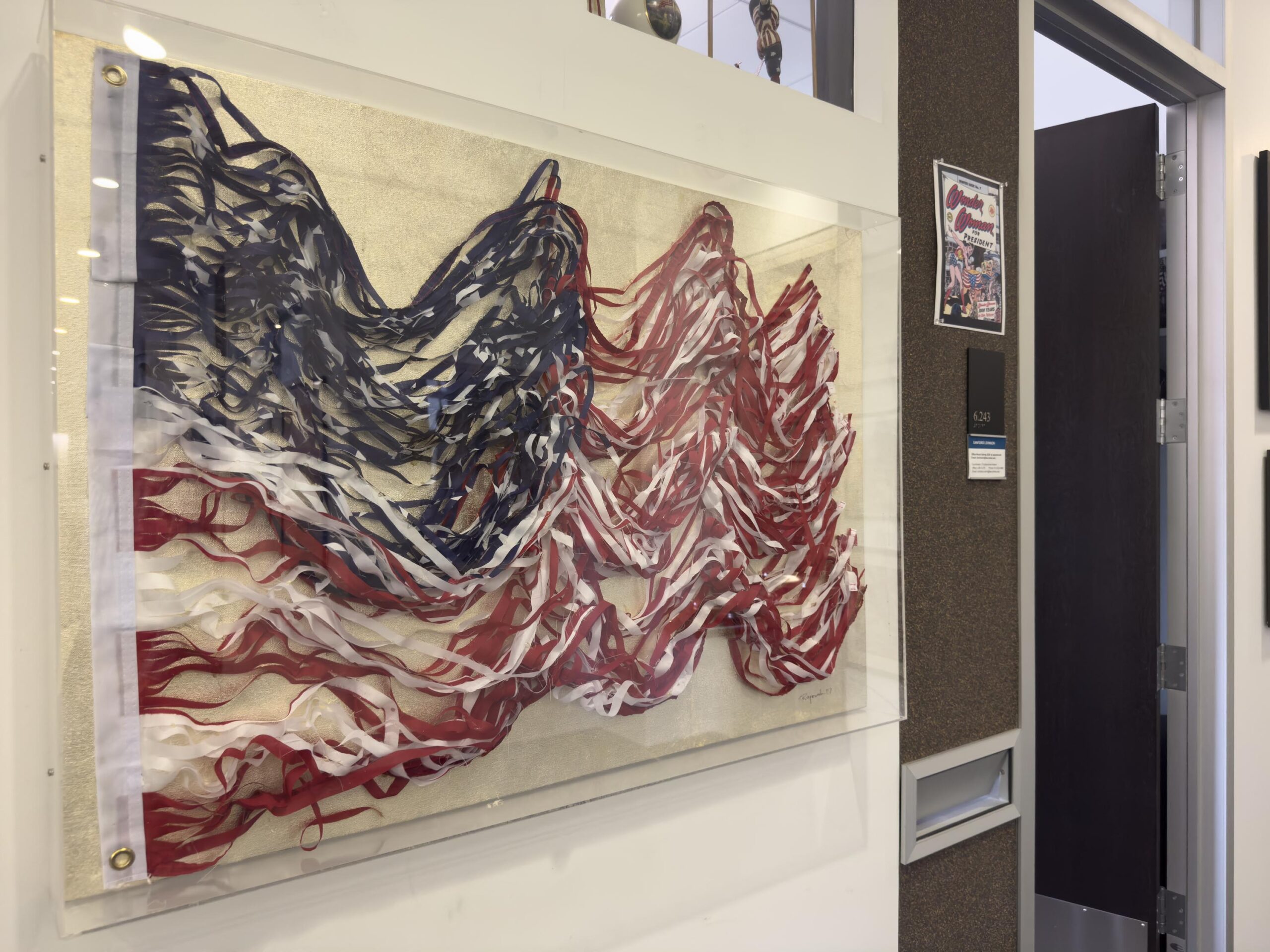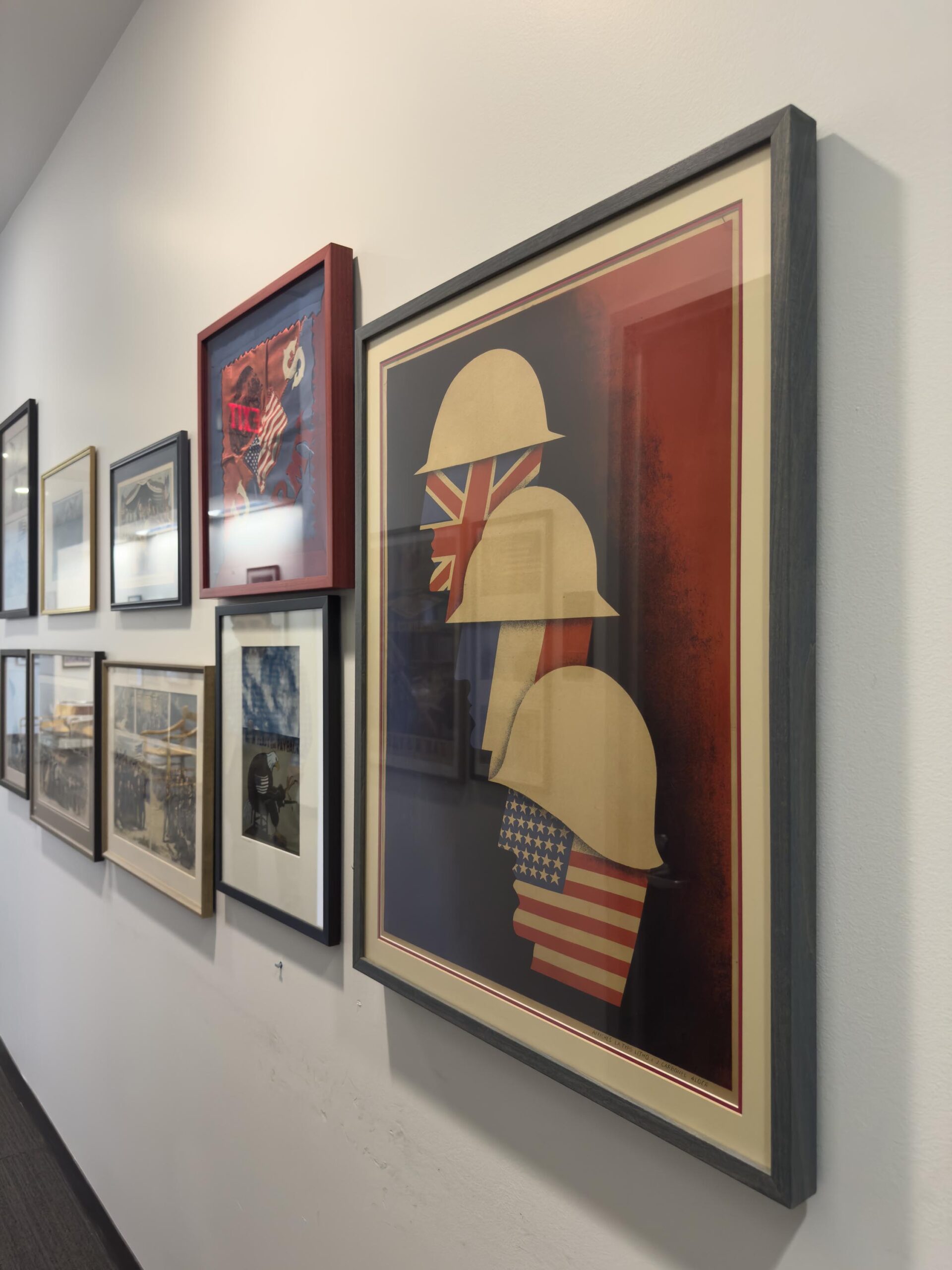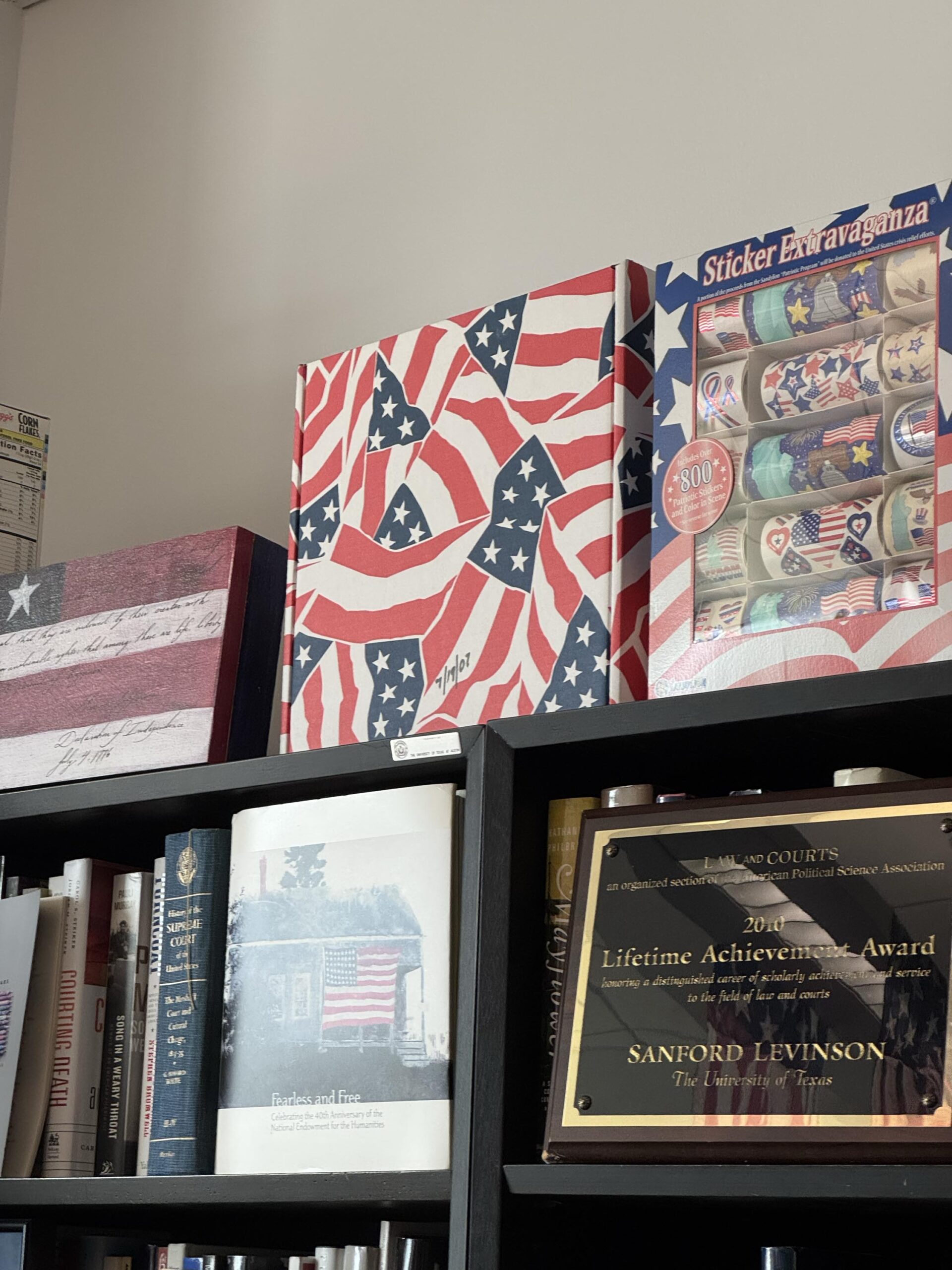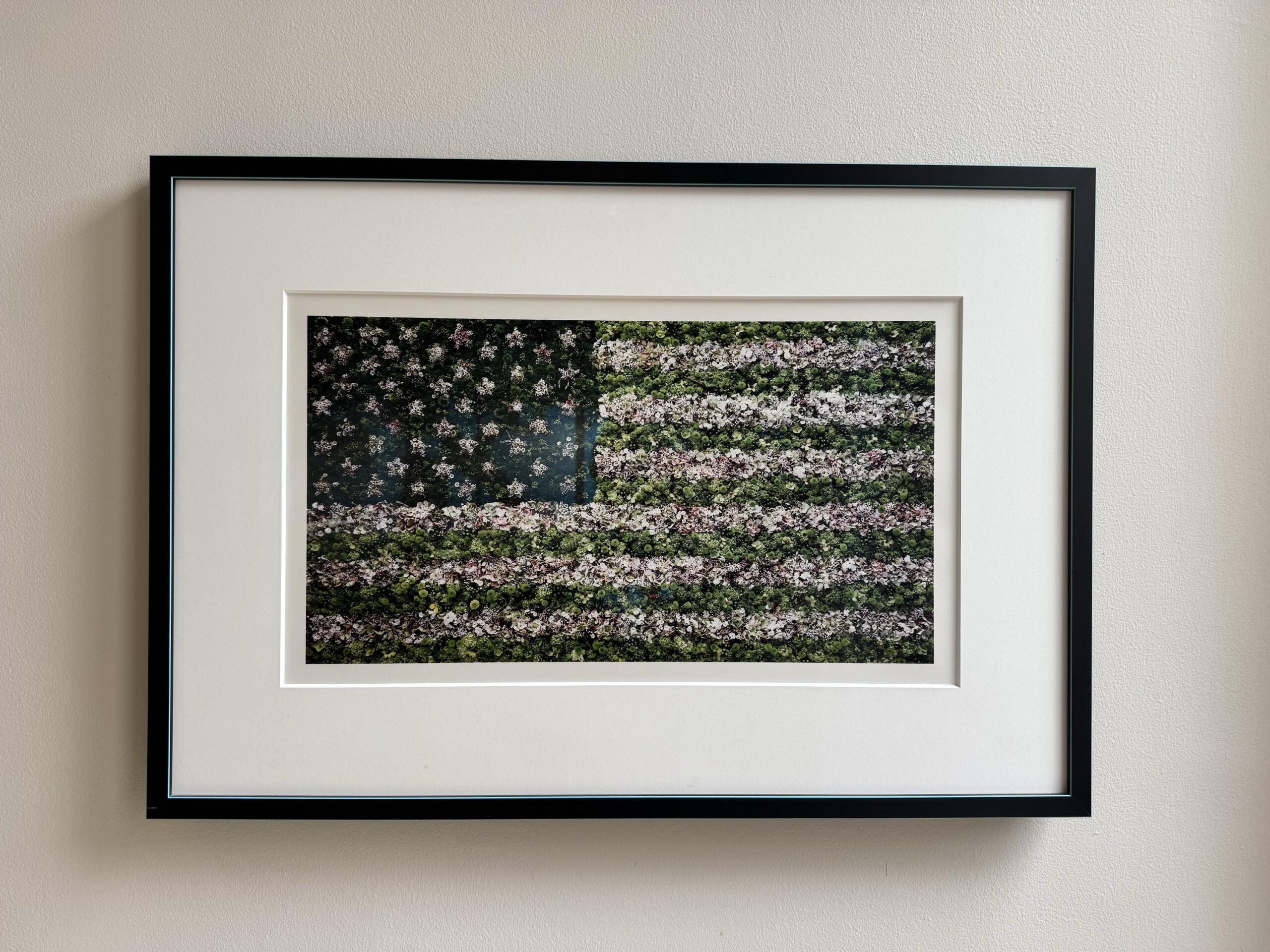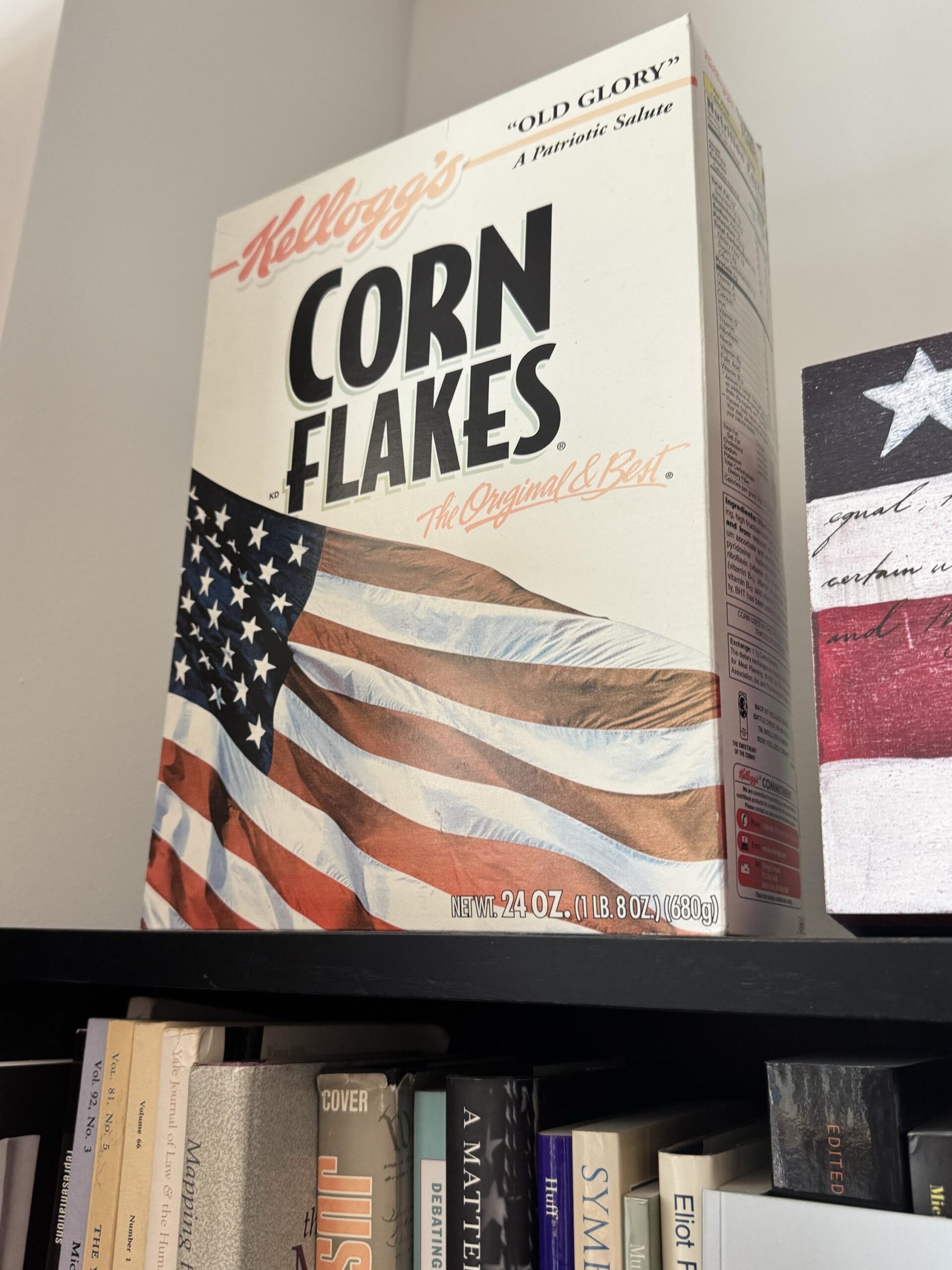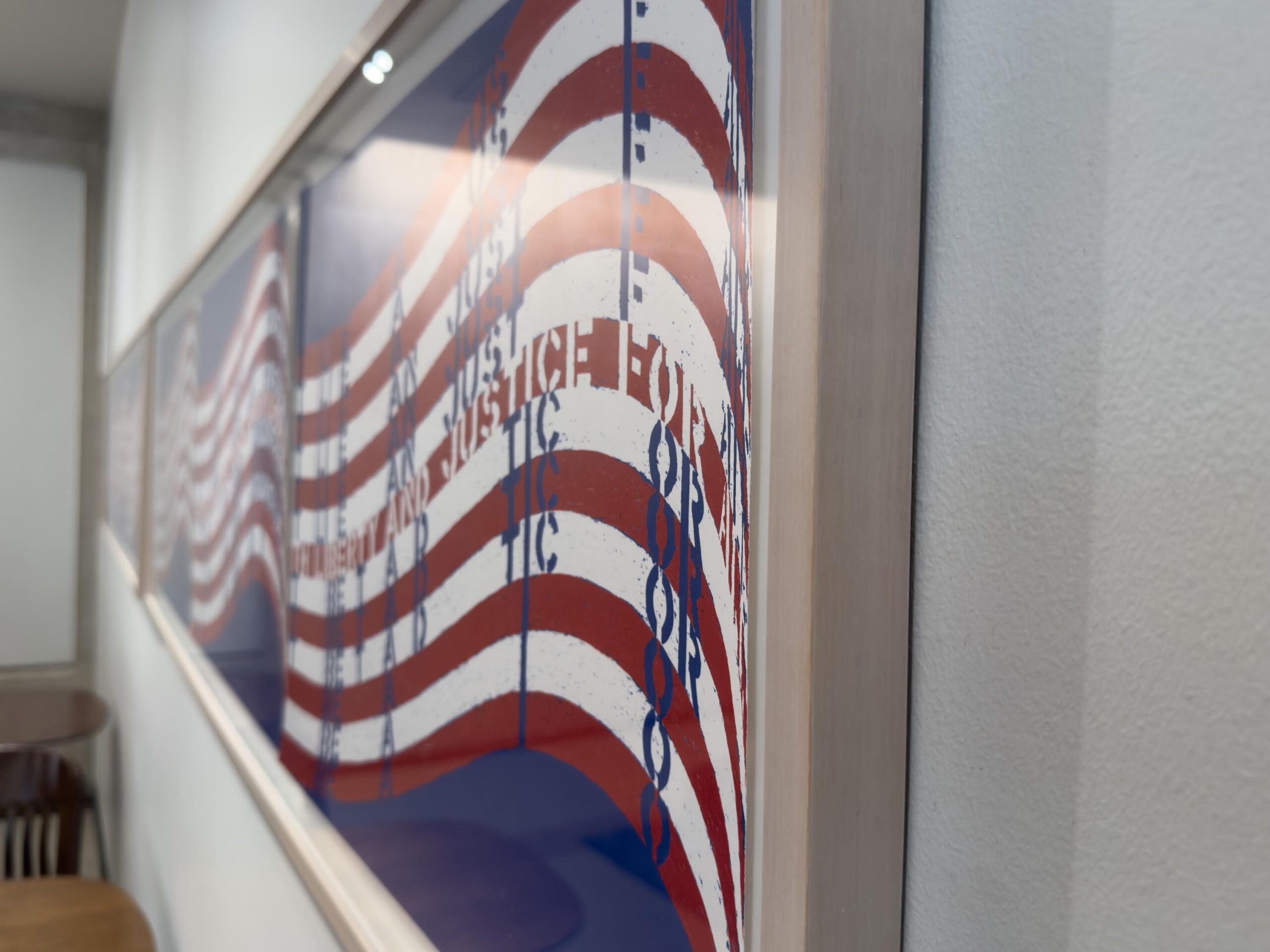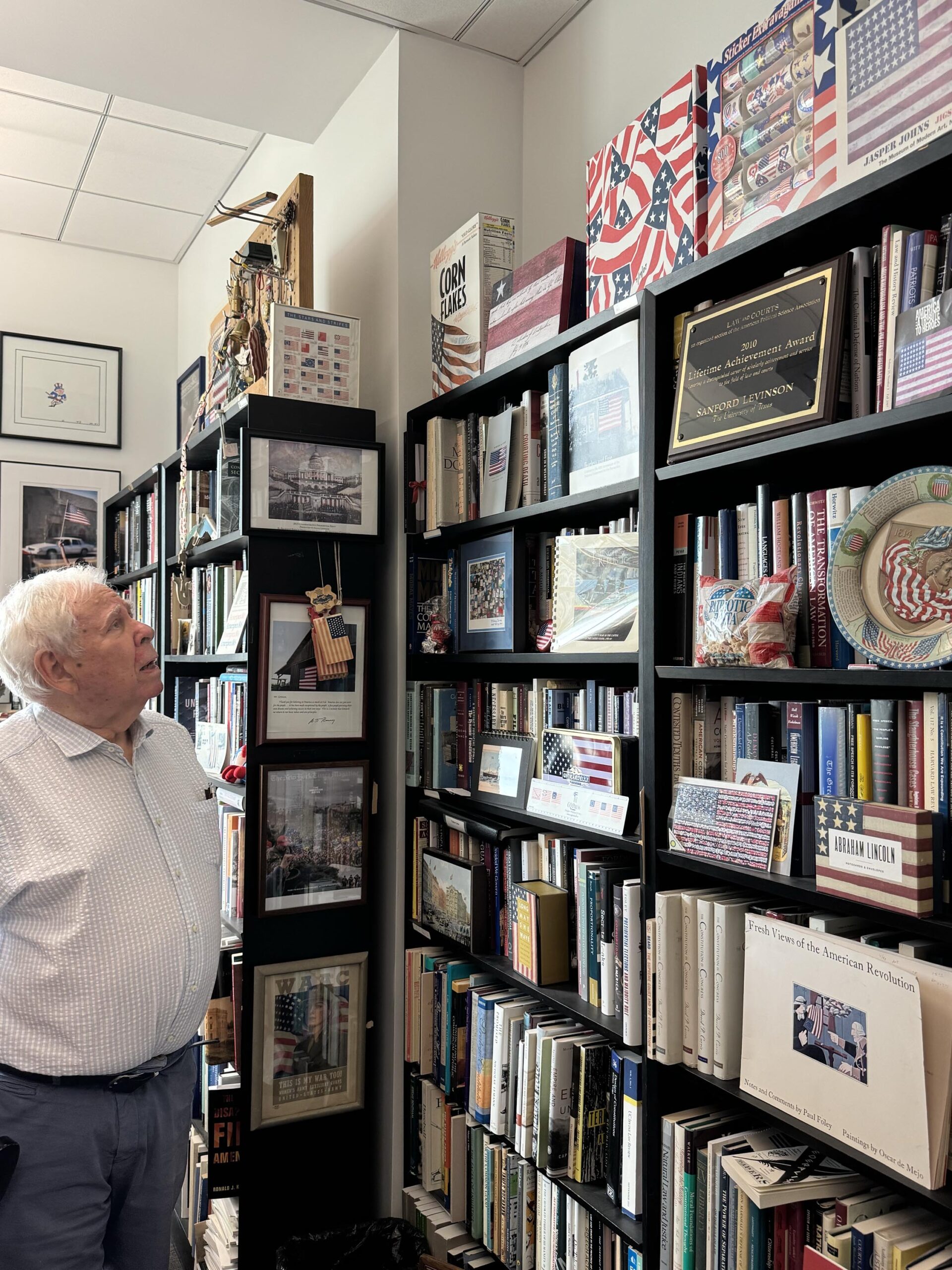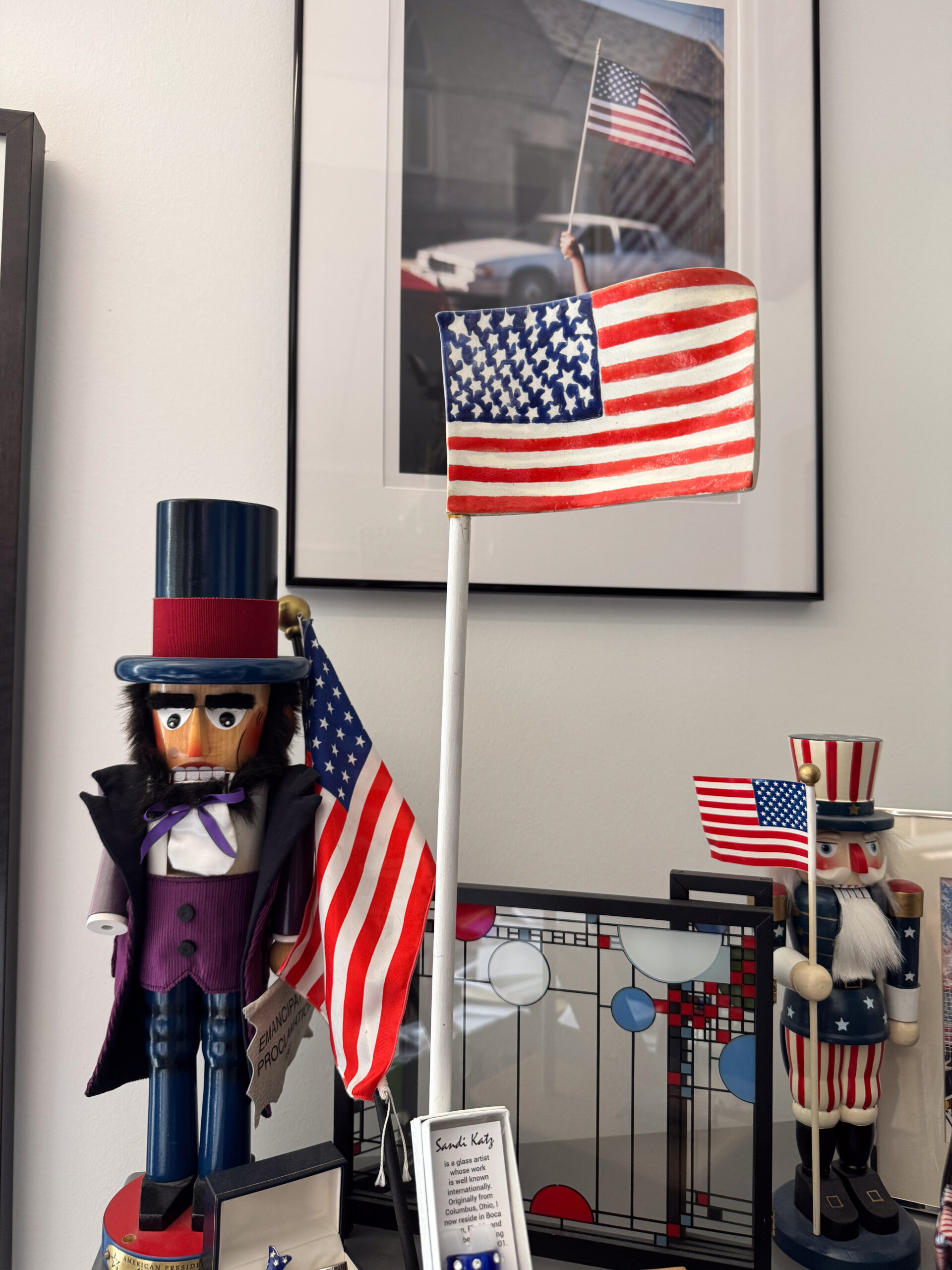
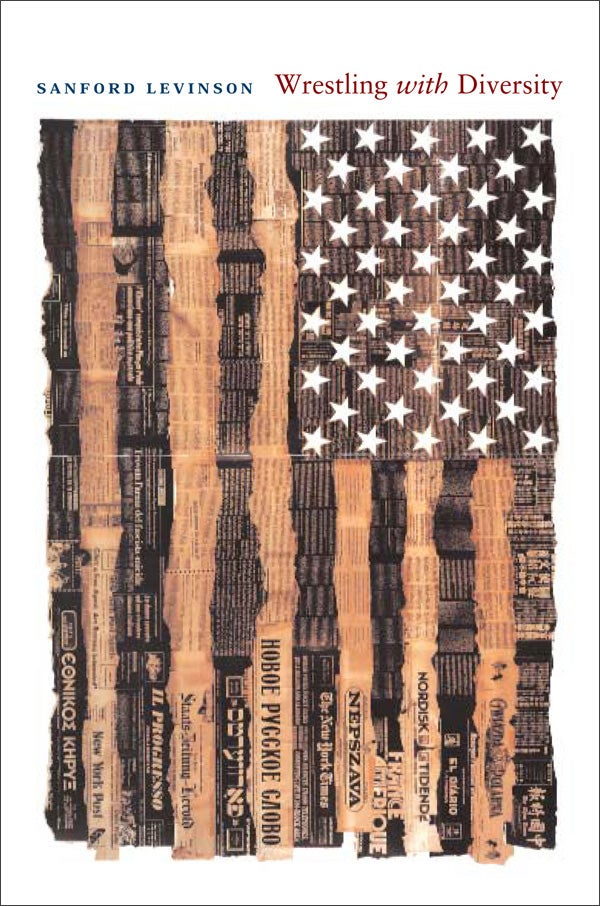
Texas Law Professor Sandy Levinson began his collection in 1974 with an unplanned buy: a porcelain American flag purchased for about $30.
At the time, Levinson was working for the nonprofit Children’s Defense Fund and living in Cambridge, Massachusetts with his wife and frequent co-author Cynthia Levinson, when he spotted the porcelain flag at a Radcliffe College student art exhibit. “I walked by, saw that, and liked it,” he says. “Over the years, one thing led to another. Part of it was having more disposable income, and part of it was at some point deciding that this was turning into a collection.”
Today, Levinson—a scholar of constitutional law, legal history, and foreign and international law at The University of Texas at Austin—has amassed more than 100 items. They range from lunch and cereal boxes to neckties to outsider art to photos by Austin high schoolers to prints from important artists and more, all united by the appearance of an American flag.
“I’m very interested in symbols and monuments, and why people care about them,” says Levinson.
Framed artworks from Levinson’s collection decorate walls in the Texas Law atrium (including an original print of “Melting Pot” which appeared on the cover of Levinson’s book “Wrestling with Diversity”) as well as outside faculty offices in Jesse Jones Hall. Even more items can be found filling the professor’s office and there’s an Andy Warhol print in his home. “I’m certainly fixated in some ways on the American flag,” he says.
Surrounded by flag-related items, we recently sat down in Levinson’s office to learn more about the collection.
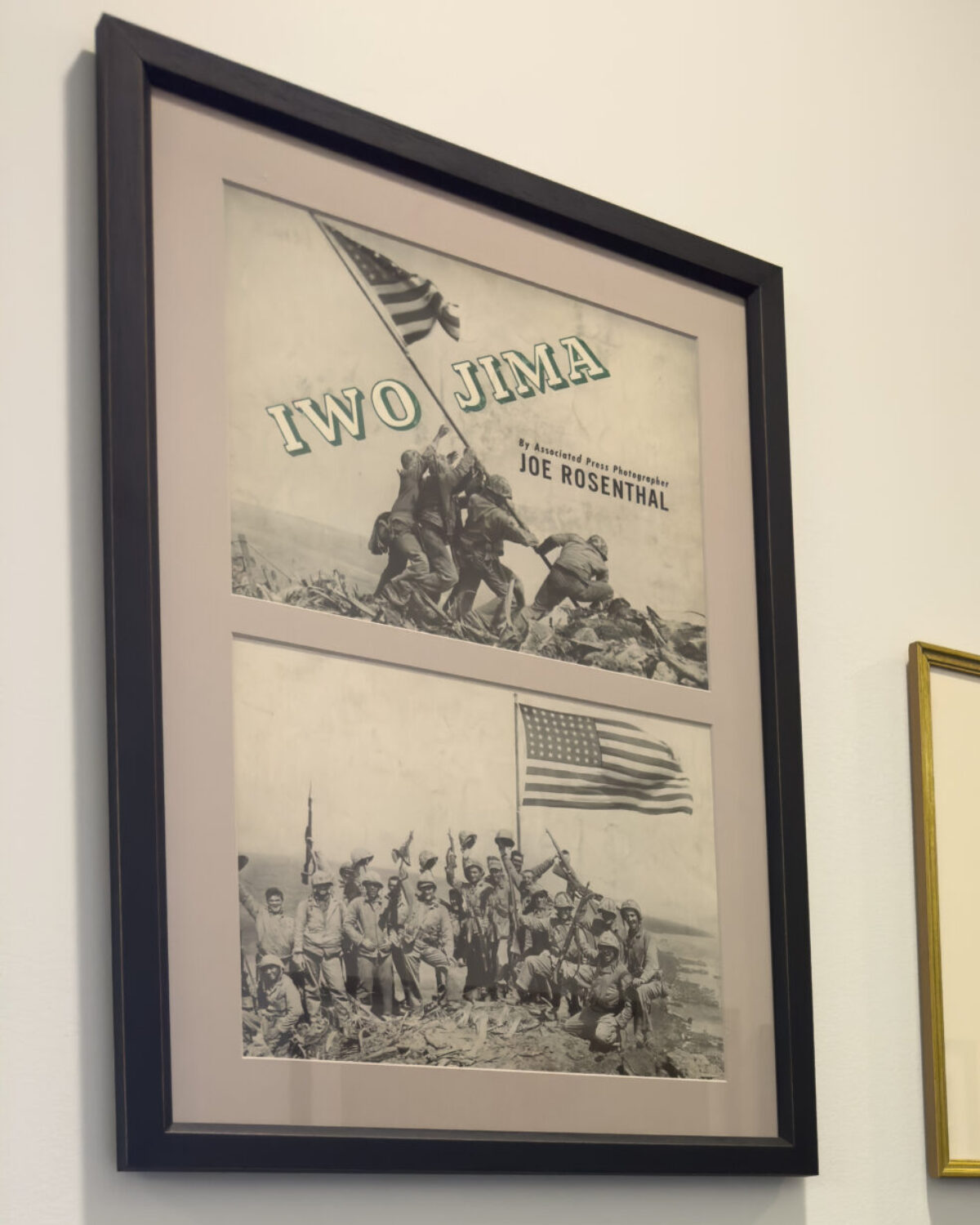
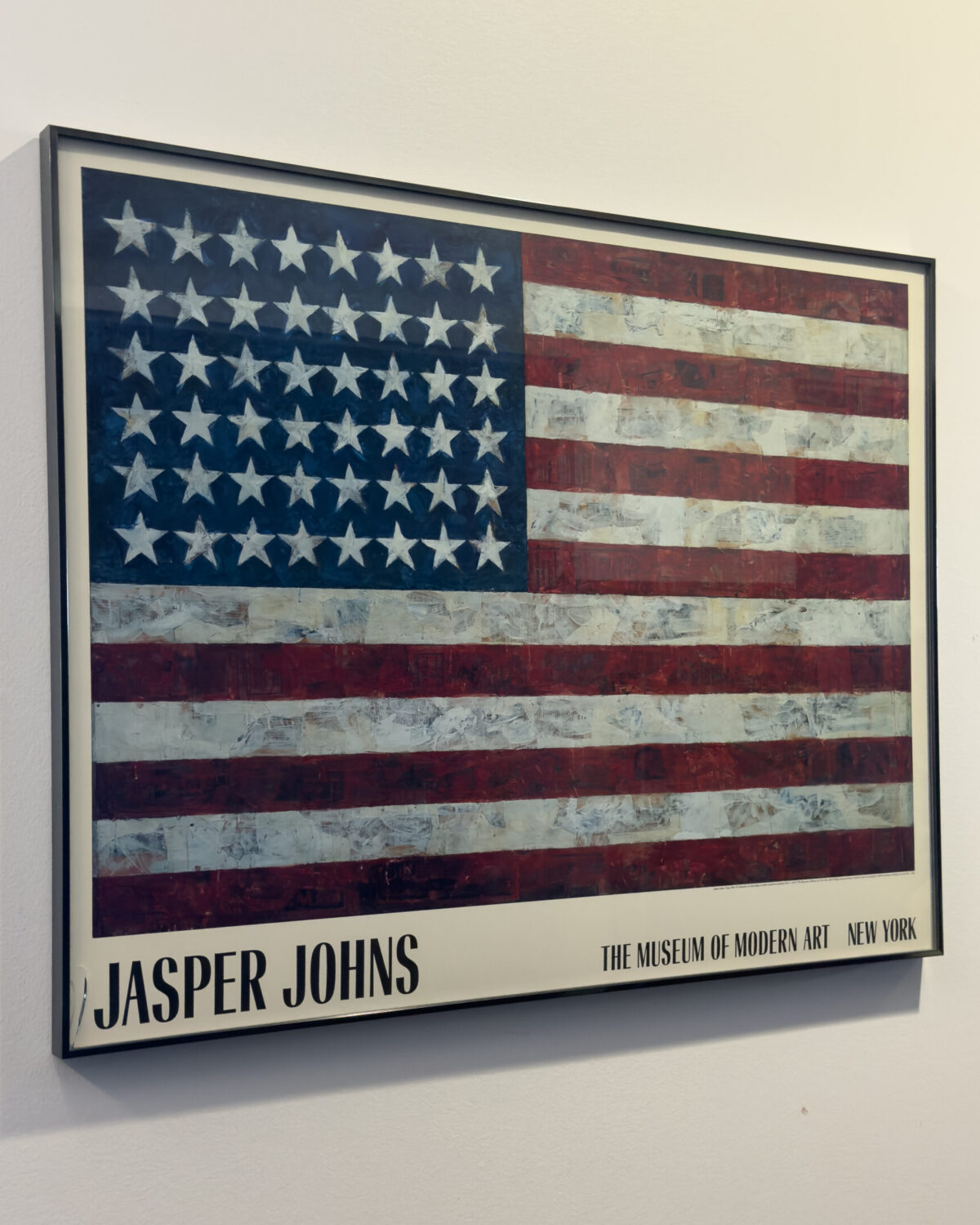
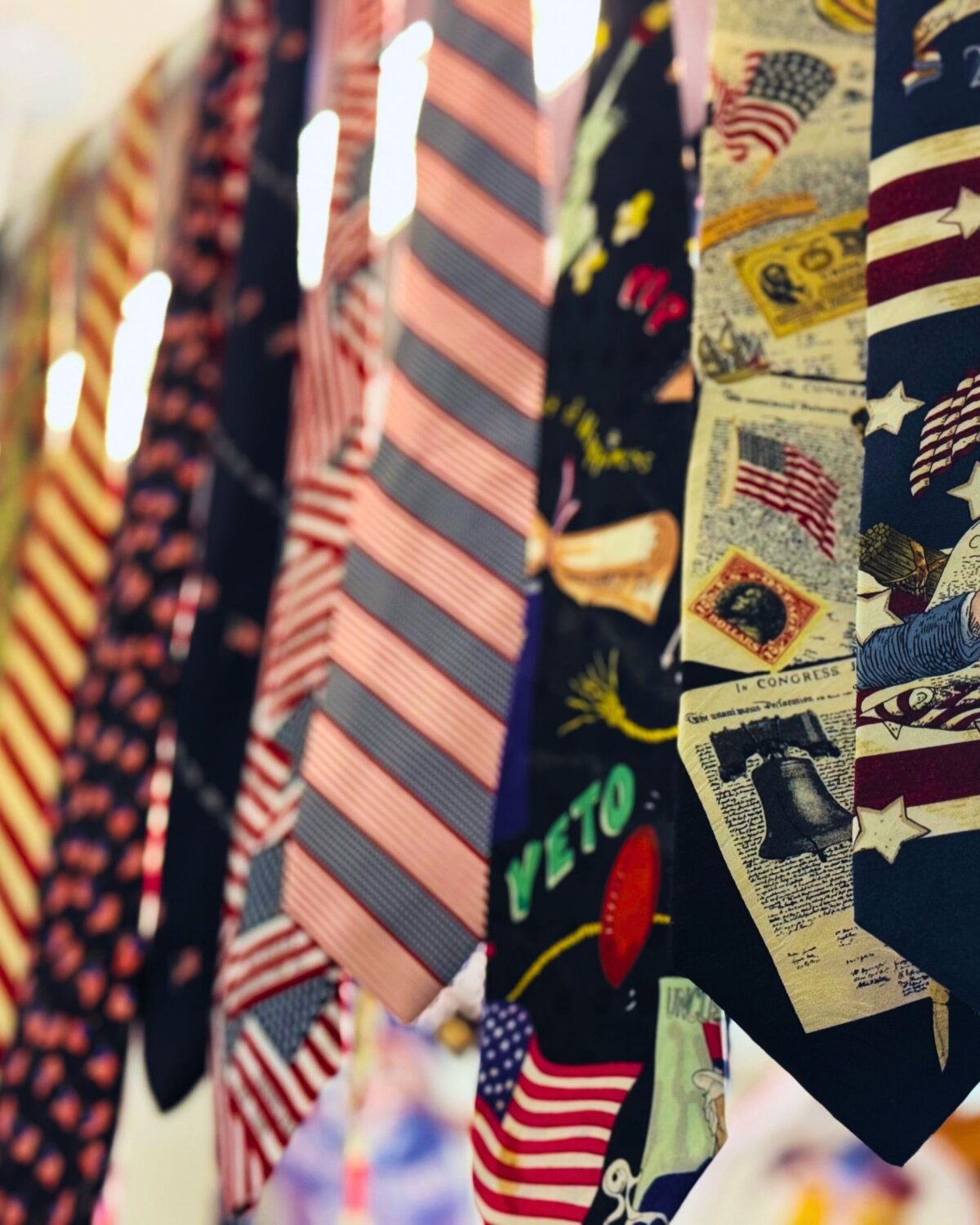
Over the years, you’ve assembled a wide variety of pieces. How do you decide what to add to your collection?
The photographs and other items just struck me. I like them, and there really is no explanation other than motive, opportunity, and something just striking me as interesting.
One of the very recent additions is right outside my office and is from a gallery auction, the Iwo Jima photo. I can’t say that I had always yearned for it, but once it was available at an auction and the price wasn’t that high, then it just seemed like, “Of course, I should get it, because any collection of depictions of the American flag should include the Iwo Jima.”
You have several works by the artist Jasper Johns, known for his representations of the flag. Can you talk about them?
Most people who know anything at all about art, if you say to them, “I’m interested in the American flag,” they’ll immediately ask, “Do you have any Jasper Johns?” I have four: two official prints he signed, an unsigned double flag poster from the Whitney Museum of American Art’s 50th anniversary, and a poster from the Museum of Modern Art.
There are some interesting questions raised by his work: Are they formal studies that happen to be about the American flag? Or is he trying to say something about the American flag, and if so, what and why? Is he a patriot? Is he deconstructing it? That’s a common theme with numerous works in the collection: What are you supposed to feel?
Meanwhile, just over my shoulder, you’ve got a collection of American flag neckties hanging in your office. Do you also wear them?
I wear a tie to make a point. I was looking for that tie with a peace sign on it (he gestures to a tie) because my wife and I went up to Providence, Rhode Island a couple weeks ago to give a talk about a book we wrote together on the Constitution. I was looking for that tie at home, and I couldn’t find it. Now I know where it is!
What does the future hold for your collection?
I’ll be retiring in two years. I would love to have some kind of farewell program on the flag collection, which would be a longer version of our conversation, as well as bringing in a couple of people to talk about both the aesthetics and the politics of the flag.
After that, would you consider donating the collection to a museum?
Nothing on its own, even the Jasper Johns prints, would interest a major museum, because they’re only prints. There’s nothing here that’s both museum quality and value, quite frankly. I’d have to work this out with the law school, but my intention is to leave a great deal of it to Texas Law, because I think the school will display it. It’s kind of fun, interesting, and fills wall space. Museums’ best stuff is rarely displayed—it’s usually in storage—and they’ll only bring it out every several years. I like the fact that this collection is available for people to see.
Levinson’s collection can be viewed at the law school, both on the walls of the atrium and the 6th floor of Jones Hall, as well as by appointment in his office or on a group tour.
